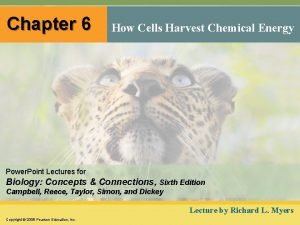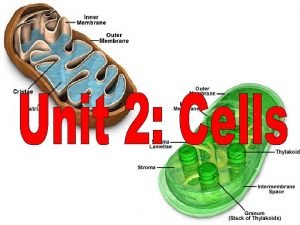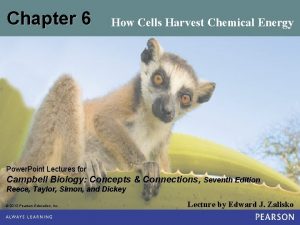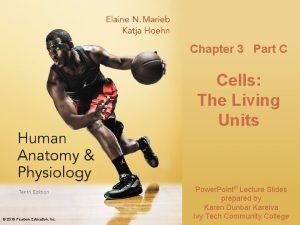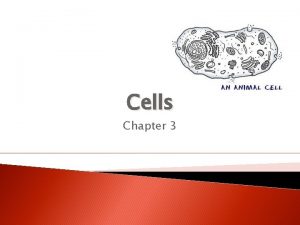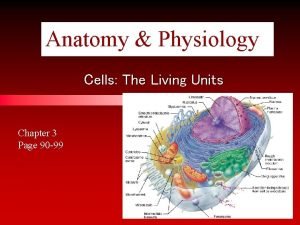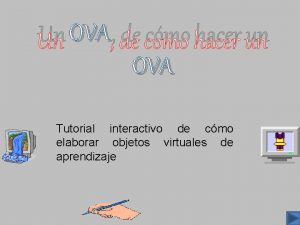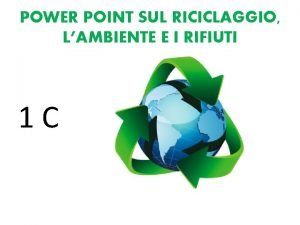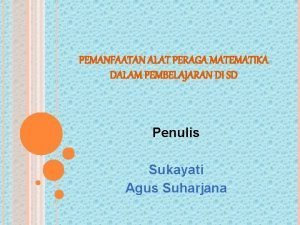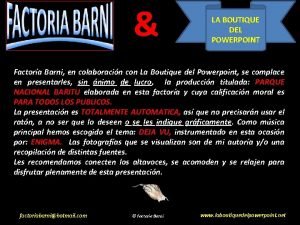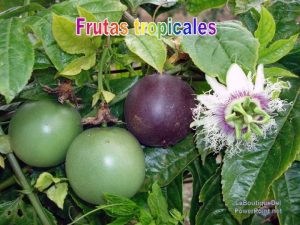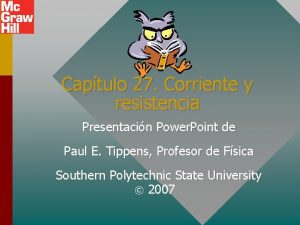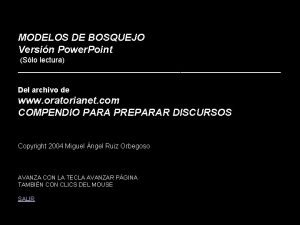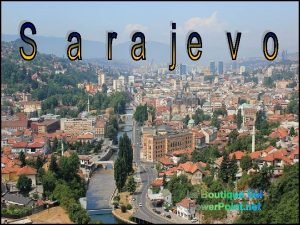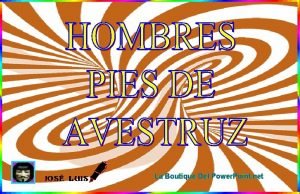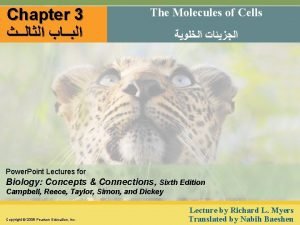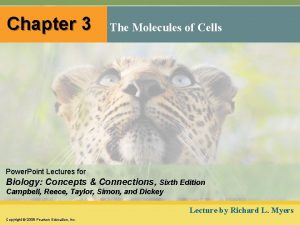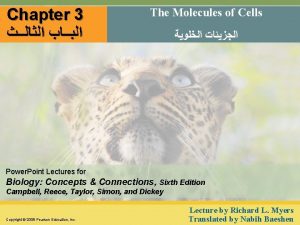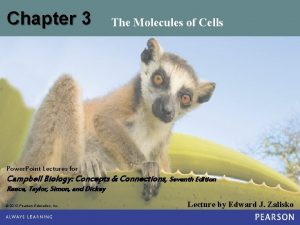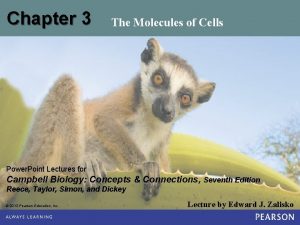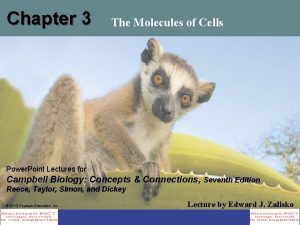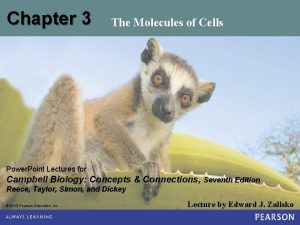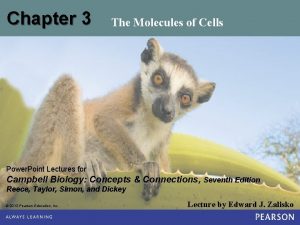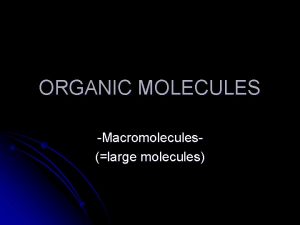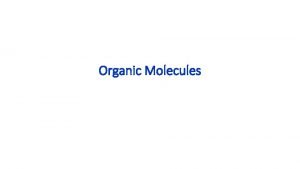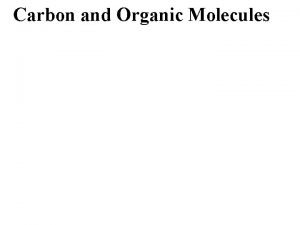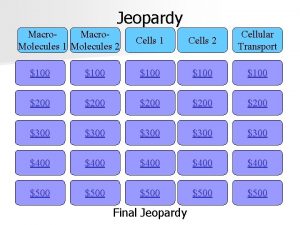Chapter 3 The Molecules of Cells Power Point





















































































































- Slides: 117

Chapter 3 The Molecules of Cells Power. Point Lectures for Biology: Concepts & Connections, Sixth Edition Campbell, Reece, Taylor, Simon, and Dickey Lecture by Richard L. Myers Copyright © 2009 Pearson Education, Inc.

Introduction: Got Lactose? § Most of the world’s population cannot digest milkbased foods – They are lactose intolerant, because they lack the enzyme lactase § This illustrates the importance of biological molecules, such as lactase, to functioning living organisms Copyright © 2009 Pearson Education, Inc.




INTRODUCTION TO ORGANIC COMPOUNDS Copyright © 2009 Pearson Education, Inc.

3. 1 Life’s molecular diversity is based on the properties of carbon § Diverse molecules found in cells are composed of carbon bonded to other elements – Carbon-based molecules are called organic compounds – By sharing electrons, carbon can bond to four other atoms – By doing so, it can branch in up to four directions Copyright © 2009 Pearson Education, Inc.

3. 1 Life’s molecular diversity is based on the properties of carbon § Methane (CH 4) is one of the simplest organic compounds – Four covalent bonds link four hydrogen atoms to the carbon atom – Each of the four lines in the formula for methane represents a pair of shared electrons Copyright © 2009 Pearson Education, Inc.

Structural formula Ball-and-stick model Space-filling model Methane The four single bonds of carbon point to the corners of a tetrahedron.

3. 1 Life’s molecular diversity is based on the properties of carbon § Methane and other compounds composed of only carbon and hydrogen are called hydrocarbons – Carbon, with attached hydrogens, can bond together in chains of various lengths Copyright © 2009 Pearson Education, Inc.

3. 1 Life’s molecular diversity is based on the properties of carbon § A chain of carbon atoms is called a carbon skeleton – Carbon skeletons can be branched or unbranched – Therefore, different compounds with the same molecular formula can be produced – These structures are called isomers Animation: L-Dopa Animation: Carbon Skeletons Animation: Isomers Copyright © 2009 Pearson Education, Inc.

Propane Ethane Length. Carbon skeletons vary in length. Isobutane Branching. Skeletons may be unbranched or branched. 2 -Butene 1 -Butene Double bonds. Skeletons may have double bonds, which can vary in location. Cyclohexane Rings. Benzene Skeletons may be arranged in rings.

Ethane Length. Propane Carbon skeletons vary in length.

Butane Isobutane Branching. Skeletons may be unbranched or branched.

1 -Butene Double bonds. 2 -Butene Skeletons may have double bonds, which can vary in location.

Cyclohexane Rings. Benzene Skeletons may be arranged in rings.

3. 2 Characteristic chemical groups help determine the properties of organic compounds § An organic compound has unique properties that depend upon – The size and shape of the molecule and – The groups of atoms (functional groups) attached to it § A functional group affects a biological molecule’s function in a characteristic way Copyright © 2009 Pearson Education, Inc.

3. 2 Characteristic chemical groups help determine the properties of organic compounds § Compounds containing functional groups are hydrophilic (water-loving) – This means that they are soluble in water, which is a necessary prerequisite for their roles in water-based life Copyright © 2009 Pearson Education, Inc.

3. 2 Characteristic chemical groups help determine the properties of organic compounds § The functional groups are – Hydroxyl group—consists of a hydrogen bonded to an oxygen – Carbonyl group—a carbon linked by a double bond to an oxygen atom – Carboxyl group—consists of a carbon double-bonded to both an oxygen and a hydroxyl group – Amino group—composed of a nitrogen bonded to two hydrogen atoms and the carbon skeleton – Phosphate group—consists of a phosphorus atom bonded to four oxygen atoms Copyright © 2009 Pearson Education, Inc.




3. 2 Characteristic chemical groups help determine the properties of organic compounds § An example of similar compounds that differ only in functional groups is sex hormones – Male and female sex hormones differ only in functional groups – The differences cause varied molecular actions – The result is distinguishable features of males and females Copyright © 2009 Pearson Education, Inc.

Estradiol Female lion Testosterone Male lion

Estradiol Female lion

Testosterone Male lion

3. 3 Cells make a huge number of large molecules from a small set of small molecules § There are four classes of biological molecules – Carbohydrates – Proteins – Lipids – Nucleic acids Copyright © 2009 Pearson Education, Inc.

3. 3 Cells make a huge number of large molecules from a small set of small molecules § The four classes of biological molecules contain very large molecules – They are often called macromolecules because of their large size – They are also called polymers because they are made from identical building blocks strung together – The building blocks are called monomers Copyright © 2009 Pearson Education, Inc.

3. 3 Cells make a huge number of large molecules from a small set of small molecules § A cell makes a large number of polymers from a small group of monomers – Proteins are made from only 20 different amino acids, and DNA is built from just four kinds of nucleotides § The monomers used to make polymers are universal Copyright © 2009 Pearson Education, Inc.

3. 3 Cells make a huge number of large molecules from a small set of small molecules § Monomers are linked together to form polymers through dehydration reactions, which remove water § Polymers are broken apart by hydrolysis, the addition of water § All biological reactions of this sort are mediated by enzymes, which speed up chemical reactions in cells Animation: Polymers Copyright © 2009 Pearson Education, Inc.

Short polymer Unlinked monomer

Short polymer Dehydration reaction Longer polymer Unlinked monomer


Hydrolysis

CARBOHYDRATES Copyright © 2009 Pearson Education, Inc.

3. 4 Monosaccharides are the simplest carbohydrates § Carbohydrates range from small sugar molecules (monomers) to large polysaccharides – Sugar monomers are monosaccharides, such as glucose and fructose – These can be hooked together to form the polysaccharides Copyright © 2009 Pearson Education, Inc.


3. 4 Monosaccharides are the simplest carbohydrates § The carbon skeletons of monosaccharides vary in length – Glucose and fructose are six carbons long – Others have three to seven carbon atoms § Monosaccharides are the main fuels for cellular work – Monosaccharides are also used as raw materials to manufacture other organic molecules Copyright © 2009 Pearson Education, Inc.

Glucose (an aldose) Fructose (a ketose)

Structural formula Abbreviated structure Simplified structure

3. 5 Cells link two single sugars to form disaccharides § Two monosaccharides (monomers) can bond to form a disaccharide in a dehydration reaction – An example is a glucose monomer bonding to a fructose monomer to form sucrose, a common disaccharide Animation: Disaccharides Copyright © 2009 Pearson Education, Inc.

Glucose

Glucose Maltose

3. 6 CONNECTION: What is high-fructose corn syrup and is it to blame for obesity? § When you drink a soda, you are probably consuming a sweetener called high-fructose corn syrup (HFCS) § Because fructose is sweeter than glucose, glucose atoms produced from starch are rearranged to make the glucose isomer, fructose – This is used to sweeten sodas – So, if you overconsume sweeteners as well as fat and do not exercise, you may experience weight gain Copyright © 2009 Pearson Education, Inc.


3. 7 Polysaccharides are long chains of sugar units § Polysaccharides are polymers of monosaccharides – They can function in the cell as a storage molecule or as a structural compound Copyright © 2009 Pearson Education, Inc.

3. 7 Polysaccharides are long chains of sugar units § Starch is a storage polysaccharide composed of glucose monomers and found in plants § Glycogen is a storage polysaccharide composed of glucose, which is hydrolyzed by animals when glucose is needed § Cellulose is a polymer of glucose that forms plant cell walls § Chitin is a polysaccharide used by insects and crustaceans to build an exoskeleton Copyright © 2009 Pearson Education, Inc.

3. 7 Polysaccharides are long chains of sugar units § Polysaccharides are hydrophilic (water-loving) – Cotton fibers, such as those in bath towels, are water absorbent Animation: Polysaccharides Copyright © 2009 Pearson Education, Inc.

Starch granules in potato tuber cells Glycogen granules in muscle tissue STARCH Glucose monomer GLYCOGEN CELLULOSE Cellulose fibrils in a plant cell wall Hydrogen bonds Cellulose molecules

Starch granules in potato tuber cells STARCH Glucose monomer

Glycogen granules in muscle tissue GLYCOGEN

CELLULOSE Cellulose fibrils in a plant cell wall Hydrogen bonds Cellulose molecules

LIPIDS Copyright © 2009 Pearson Education, Inc.

3. 8 Fats are lipids that are mostly energy-storage molecules § Lipids are water insoluble (hydrophobic, or water fearing) compounds that are important in energy storage – They contain twice as much energy as a polysaccharide § Fats are lipids made from glycerol and fatty acids Copyright © 2009 Pearson Education, Inc.


3. 8 Fats are lipids that are mostly energy-storage molecules § Fatty acids link to glycerol by a dehydration reaction – A fat contains one glycerol linked to three fatty acids – Fats are often called triglycerides because of their structure Animation: Fats Copyright © 2009 Pearson Education, Inc.

Glycerol Fatty acid


3. 8 Fats are lipids that are mostly energy-storage molecules § Some fatty acids contain double bonds – This causes kinks or bends in the carbon chain because the maximum number of hydrogen atoms cannot bond to the carbons at the double bond – These compounds are called unsaturated fats because they have fewer than the maximum number of hydrogens – Fats with the maximum number of hydrogens are called saturated fats Copyright © 2009 Pearson Education, Inc.

3. 9 Phospholipids and steroids are important lipids with a variety of functions § Phospholipids are structurally similar to fats and are an important component of all cells – For example, they are a major part of cell membranes, in which they cluster into a bilayer of phospholipids – The hydrophilic heads are in contact with the water of the environment and the internal part of the cell – The hydrophobic tails band in the center of the bilayer Copyright © 2009 Pearson Education, Inc.

Hydrophilic heads Water Hydrophobic tails Water

3. 9 Phospholipids and steroids are important lipids with a variety of functions § Steroids are lipids composed of fused ring structures – Cholesterol is an example of a steroid that plays a significant role in the structure of the cell membrane – In addition, cholesterol is the compound from which we synthesize sex hormones Copyright © 2009 Pearson Education, Inc.


3. 10 CONNECTION: Anabolic steroids pose health risks § Anabolic steroids are synthetic variants of testosterone that can cause a buildup of muscle and bone mass – They can be sold as prescription drugs and used to treat certain diseases – They may also be abused with serious consequences, such as liver damage that can lead to cancer Copyright © 2009 Pearson Education, Inc.


PROTEINS Copyright © 2009 Pearson Education, Inc.

3. 11 Proteins are essential to the structures and functions of life § A protein is a polymer built from various combinations of 20 amino acid monomers – Proteins have unique structures that are directly related to their functions – Enzymes, proteins that serve as metabolic catalysts, regulate the chemical reactions within cells Copyright © 2009 Pearson Education, Inc.

3. 11 Proteins are essential to the structures and functions of life § Structural proteins provide associations between body parts and contractile proteins are found within muscle § Defensive proteins include antibodies of the immune system, and signal proteins are best exemplified by the hormones § Receptor proteins serve as antenna for outside signals, and transport proteins carry oxygen Copyright © 2009 Pearson Education, Inc.


3. 12 Proteins are made from amino acids linked by peptide bonds § Amino acids, the building blocks of proteins, have an amino group and a carboxyl group – Both of these are covalently bonded to a central carbon atom – Also bonded to the central carbon is a hydrogen atom and some other chemical group symbolized by R Copyright © 2009 Pearson Education, Inc.

Amino group Carboxyl group

3. 12 Proteins are made from amino acids linked by peptide bonds § Amino acids are classified as hydrophobic or hydrophilic – Some amino acids have a nonpolar R group and are hydrophobic – Others have a polar R group and are hydrophilic, which means they easily dissolve in aqueous solutions Copyright © 2009 Pearson Education, Inc.

Leucine (Leu) Hydrophobic Serine (Ser) Aspartic acid (Asp) Hydrophilic

3. 12 Proteins are made from amino acids linked by peptide bonds § Amino acid monomers are linked together to form polymeric proteins – This is accomplished by an enzyme-mediated dehydration reaction – This links the carboxyl group of one amino acid to the amino group of the next amino acid – The covalent linkage resulting is called a peptide bond Copyright © 2009 Pearson Education, Inc.

Carboxyl group Amino acid Amino group Amino acid

Carboxyl group Amino acid Amino group Amino acid Peptide bond Dehydration reaction Dipeptide

3. 13 A protein’s specific shape determines its function § A polypeptide chain contains hundreds or thousands of amino acids linked by peptide bonds – The amino acid sequence causes the polypeptide to assume a particular shape – The shape of a protein determines its specific function Copyright © 2009 Pearson Education, Inc.

Groove

Groove

3. 13 A protein’s specific shape determines its function § If for some reason a protein’s shape is altered, it can no longer function – Denaturation will cause polypeptide chains to unravel and lose their shape and, thus, their function – Proteins can be denatured by changes in salt concentration and p. H Copyright © 2009 Pearson Education, Inc.

3. 14 A protein’s shape depends on four levels of structure § A protein can have four levels of structure – Primary structure – Secondary structure – Tertiary structure – Quaternary structure Copyright © 2009 Pearson Education, Inc.

3. 14 A protein’s shape depends on four levels of structure § The primary structure of a protein is its unique amino acid sequence – The correct amino acid sequence is determined by the cell’s genetic information – The slightest change in this sequence affects the protein’s ability to function Copyright © 2009 Pearson Education, Inc.

3. 14 A protein’s shape depends on four levels of structure § Protein secondary structure results from coiling or folding of the polypeptide – Coiling results in a helical structure called an alpha helix – Folding may lead to a structure called a pleated sheet – Coiling and folding result from hydrogen bonding between certain areas of the polypeptide chain Copyright © 2009 Pearson Education, Inc.


Polypeptide chain Collagen

3. 14 A protein’s shape depends on four levels of structure § The overall three-dimensional shape of a protein is called its tertiary structure – Tertiary structure generally results from interactions between the R groups of the various amino acids – Disulfide bridges are covalent bonds that further strengthen the protein’s shape Copyright © 2009 Pearson Education, Inc.

3. 14 A protein’s shape depends on four levels of structure § Two or more polypeptide chains (subunits) associate providing quaternary structure – Collagen is an example of a protein with quaternary structure – Its triple helix gives great strength to connective tissue, bone, tendons, and ligaments Animation: Protein Structure Introduction Animation: Primary Protein Structure Animation: Secondary Protein Structure Animation: Tertiary Protein Structure Animation: Quaternary Protein Structure Copyright © 2009 Pearson Education, Inc.

Four Levels of Protein Structure Primary structure Amino acids

Four Levels of Protein Structure Primary structure Amino acids Hydrogen bond Secondary structure Alpha helix Pleated sheet

Four Levels of Protein Structure Primary structure Amino acids Hydrogen bond Secondary structure Alpha helix Tertiary structure Polypeptide (single subunit of transthyretin) Pleated sheet

Four Levels of Protein Structure Primary structure Amino acids Hydrogen bond Secondary structure Alpha helix Tertiary structure Quaternary structure Pleated sheet Polypeptide (single subunit of transthyretin) Transthyretin, with four identical polypeptide subunits

Amino acids Primary structure

Amino acids Hydrogen bond Alpha helix Secondary structure Pleated sheet

Polypeptide (single subunit of transthyretin) Tertiary structure

Transthyretin, with four identical polypeptide subunits Quaternary structure

3. 15 TALKING ABOUT SCIENCE: Linus Pauling contributed to our understanding of the chemistry of life § After winning a Nobel Prize in Chemistry, Pauling spent considerable time studying biological molecules – He discovered an oxygen attachment to hemoglobin as well as the cause of sickle-cell disease – Pauling also discovered the alpha helix and pleated sheet of proteins Copyright © 2009 Pearson Education, Inc.


NUCLEIC ACIDS Copyright © 2009 Pearson Education, Inc.

3. 16 Nucleic acids are information-rich polymers of nucleotides § DNA (deoxyribonucleic acid) and RNA (ribonucleic acid) are composed of monomers called nucleotides – Nucleotides have three parts – A five-carbon sugar called ribose in RNA and deoxyribose in DNA – A phosphate group – A nitrogenous base Copyright © 2009 Pearson Education, Inc.

Nitrogenous base (adenine) Phosphate group Sugar

3. 16 Nucleic acids are information-rich polymers of nucleotides § DNA nitrogenous bases are adenine (A), thymine (T), cytosine (C), and guanine (G) – RNA also has A, C, and G, but instead of T, it has uracil (U) Copyright © 2009 Pearson Education, Inc.

3. 16 Nucleic acids are information-rich polymers of nucleotides § A nucleic acid polymer, a polynucleotide, forms from the nucleotide monomers when the phosphate of one nucleotide bonds to the sugar of the next nucleotide – The result is a repeating sugar-phosphate backbone with protruding nitrogenous bases Copyright © 2009 Pearson Education, Inc.

Nucleotide Sugar-phosphate backbone

3. 16 Nucleic acids are information-rich polymers of nucleotides § Two polynucleotide strands wrap around each other to form a DNA double helix – The two strands are associated because particular bases always hydrogen bond to one another – A pairs with T, and C pairs with G, producing base pairs § RNA is usually a single polynucleotide strand Copyright © 2009 Pearson Education, Inc.

Base pair

3. 16 Nucleic acids are information-rich polymers of nucleotides § A particular nucleotide sequence that can instruct the formation of a polypeptide is called a gene – Most DNA molecules consist of millions of base pairs and, consequently, many genes – These genes, many of which are unique to the species, determine the structure of proteins and, thus, life’s structures and functions Copyright © 2009 Pearson Education, Inc.

3. 17 EVOLUTION CONNECTION: Lactose tolerance is a recent event in human evolution § Mutations are alterations in bases or the sequence of bases in DNA – Lactose tolerance is the result of mutations – In many people, the gene that dictates lactose utilization is turned off in adulthood – Apparently, mutations occurred over time that prevented the gene from turning off – This is an excellent example of human evolution Copyright © 2009 Pearson Education, Inc.

Dehydration Short polymer Monomer Hydrolysis Longer polymer





Sucrose


Enzyme B Rate of reaction Enzyme A 0 40 20 80 60 Temperature (°C) 100

You should now be able to 1. Discuss the importance of carbon to life’s molecular diversity 2. Describe the chemical groups that are important to life 3. Explain how a cell can make a variety of large molecules from a small set of molecules 4. Define monosaccharides, disaccharides, and polysaccharides and explain their functions 5. Define lipids, phospholipids, and steroids and explain their functions Copyright © 2009 Pearson Education, Inc.

You should now be able to 6. Describe the chemical structure of proteins and their importance to cells 7. Describe the chemical structure of nucleic acids and how they relate to inheritance Copyright © 2009 Pearson Education, Inc.
 Organic molecules vs inorganic molecules
Organic molecules vs inorganic molecules Chapter 8 cellular reproduction cells from cells
Chapter 8 cellular reproduction cells from cells Real power formula
Real power formula Paranasal sinuses development
Paranasal sinuses development Medullary portion of collecting duct
Medullary portion of collecting duct Parafollicular cells vs follicular cells
Parafollicular cells vs follicular cells Haploid vs diploid venn diagram
Haploid vs diploid venn diagram Why dna is more stable than rna?
Why dna is more stable than rna? Red blood cells and white blood cells difference
Red blood cells and white blood cells difference Prokaryotic vs eukaryotic
Prokaryotic vs eukaryotic Plant vs animal cells venn diagram
Plant vs animal cells venn diagram Prokaryotic cells vs eukaryotic cells venn diagram
Prokaryotic cells vs eukaryotic cells venn diagram Cell organelle jeopardy
Cell organelle jeopardy Masses of cells form and steal nutrients from healthy cells
Masses of cells form and steal nutrients from healthy cells Pseudostratified vs simple columnar
Pseudostratified vs simple columnar What cell type
What cell type Which compares prokaryotes and eukaryotes
Which compares prokaryotes and eukaryotes Cells cells they're made of organelles meme
Cells cells they're made of organelles meme Power bi power point
Power bi power point Point point power
Point point power Chapter 3 molecules of life
Chapter 3 molecules of life Chapter 2 atoms molecules and ions
Chapter 2 atoms molecules and ions Hát kết hợp bộ gõ cơ thể
Hát kết hợp bộ gõ cơ thể Frameset trong html5
Frameset trong html5 Bổ thể
Bổ thể Tỉ lệ cơ thể trẻ em
Tỉ lệ cơ thể trẻ em Gấu đi như thế nào
Gấu đi như thế nào Chụp phim tư thế worms-breton
Chụp phim tư thế worms-breton Chúa sống lại
Chúa sống lại Các môn thể thao bắt đầu bằng tiếng chạy
Các môn thể thao bắt đầu bằng tiếng chạy Thế nào là hệ số cao nhất
Thế nào là hệ số cao nhất Các châu lục và đại dương trên thế giới
Các châu lục và đại dương trên thế giới Công thức tiính động năng
Công thức tiính động năng Trời xanh đây là của chúng ta thể thơ
Trời xanh đây là của chúng ta thể thơ Mật thư anh em như thể tay chân
Mật thư anh em như thể tay chân Phép trừ bù
Phép trừ bù độ dài liên kết
độ dài liên kết Các châu lục và đại dương trên thế giới
Các châu lục và đại dương trên thế giới Thể thơ truyền thống
Thể thơ truyền thống Quá trình desamine hóa có thể tạo ra
Quá trình desamine hóa có thể tạo ra Một số thể thơ truyền thống
Một số thể thơ truyền thống Cái miệng nó xinh thế chỉ nói điều hay thôi
Cái miệng nó xinh thế chỉ nói điều hay thôi Vẽ hình chiếu vuông góc của vật thể sau
Vẽ hình chiếu vuông góc của vật thể sau Thế nào là sự mỏi cơ
Thế nào là sự mỏi cơ đặc điểm cơ thể của người tối cổ
đặc điểm cơ thể của người tối cổ Giọng cùng tên là
Giọng cùng tên là Vẽ hình chiếu đứng bằng cạnh của vật thể
Vẽ hình chiếu đứng bằng cạnh của vật thể Fecboak
Fecboak Thẻ vin
Thẻ vin đại từ thay thế
đại từ thay thế điện thế nghỉ
điện thế nghỉ Tư thế ngồi viết
Tư thế ngồi viết Diễn thế sinh thái là
Diễn thế sinh thái là Các loại đột biến cấu trúc nhiễm sắc thể
Các loại đột biến cấu trúc nhiễm sắc thể Số nguyên tố là
Số nguyên tố là Tư thế ngồi viết
Tư thế ngồi viết Lời thề hippocrates
Lời thề hippocrates Thiếu nhi thế giới liên hoan
Thiếu nhi thế giới liên hoan ưu thế lai là gì
ưu thế lai là gì Khi nào hổ mẹ dạy hổ con săn mồi
Khi nào hổ mẹ dạy hổ con săn mồi Sự nuôi và dạy con của hổ
Sự nuôi và dạy con của hổ Sơ đồ cơ thể người
Sơ đồ cơ thể người Từ ngữ thể hiện lòng nhân hậu
Từ ngữ thể hiện lòng nhân hậu Thế nào là mạng điện lắp đặt kiểu nổi
Thế nào là mạng điện lắp đặt kiểu nổi Chapter 6 how cells harvest chemical energy
Chapter 6 how cells harvest chemical energy Body tissues worksheet
Body tissues worksheet Body tissues chapter 3 cells and tissues
Body tissues chapter 3 cells and tissues Which part of the cell contains genetic material
Which part of the cell contains genetic material Chapter 3 cells and tissues figure 3-1
Chapter 3 cells and tissues figure 3-1 Body tissues chapter 3 cells and tissues
Body tissues chapter 3 cells and tissues What is the function of the golgi apparatus
What is the function of the golgi apparatus Body tissues chapter 3 cells and tissues
Body tissues chapter 3 cells and tissues Chapter 4 cells and energy
Chapter 4 cells and energy How cells harvest chemical energy chapter 6
How cells harvest chemical energy chapter 6 Chapter 3 cells the living units
Chapter 3 cells the living units Chapter 3 cells the living units
Chapter 3 cells the living units A sticky semi fluid material found
A sticky semi fluid material found Mitosis
Mitosis Solar power satellites and microwave power transmission
Solar power satellites and microwave power transmission Potential power
Potential power Flex power power supply
Flex power power supply Define dispersive power of a grating
Define dispersive power of a grating Power of a power property
Power of a power property General power rule
General power rule Power angle curve in power system stability
Power angle curve in power system stability Power absorbed or supplied
Power absorbed or supplied Evangelio del domingo en power point
Evangelio del domingo en power point Como hacer un ova
Como hacer un ova La boutique del power point rincones del mundo
La boutique del power point rincones del mundo Tennis power point
Tennis power point Power point turing complete
Power point turing complete Powerpoint sul riciclo scuola media
Powerpoint sul riciclo scuola media Fungsi blok dienes
Fungsi blok dienes Pelajaran sekolah sabat dewasa powerpoint
Pelajaran sekolah sabat dewasa powerpoint La boutique del power point x
La boutique del power point x La boutique del power point
La boutique del power point La boutique del power point
La boutique del power point La boutique del power point
La boutique del power point Pengertian gizi kuliner
Pengertian gizi kuliner Decreto 1330 de julio 25 de 2019
Decreto 1330 de julio 25 de 2019 Powerpoint
Powerpoint Partes de un portafolio digital
Partes de un portafolio digital Pengoperasian power point
Pengoperasian power point Formula resistividad
Formula resistividad Apple keynote advantages and disadvantages
Apple keynote advantages and disadvantages Ventajas de power point
Ventajas de power point Tesina power point
Tesina power point La boutique del power point
La boutique del power point Alur penyusunan rpp
Alur penyusunan rpp Power point fisica
Power point fisica Power point
Power point Concentrese en power point
Concentrese en power point Modelos de bosquejos
Modelos de bosquejos Powerpoint sugli egizi
Powerpoint sugli egizi La boutique del power point x
La boutique del power point x La boutique del powerpoint x
La boutique del powerpoint x La boutique del powerpoint x
La boutique del powerpoint x La boutique del power point
La boutique del power point
































































